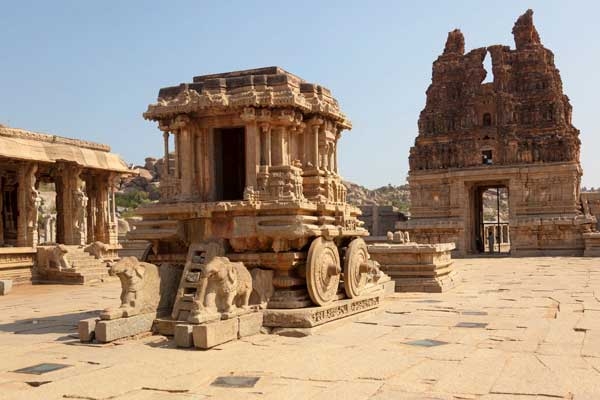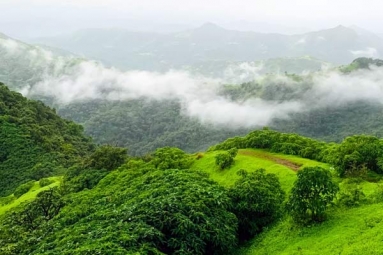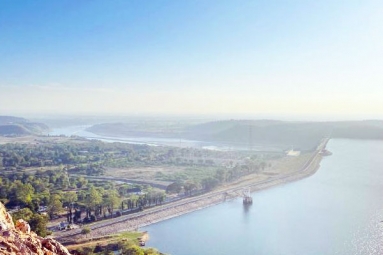
(Image source from: Canva.com)
India is renowned for its stunning mix of cultures. This nation offers everything from historical temples and magnificent castles to peaceful hillside towns and vibrant celebrations. Besides its vibrant traditions, India is home to numerous UNESCO World Heritage Sites, each notable in its own way. These locations are more than just beautiful views; they combine architecture, nature's charm, and narratives that go beyond mere stone inscriptions. For visitors, they represent more than mere destinations on a map, serving as gateways to the past. For photographers, they provide a canvas filled with light and textures. If you enjoy exploring new places, appreciating timeless beauty, and capturing striking photos for your social media, these six sites are sure to inspire your travel desires. UNESCO World Heritage Sites are places recognized by the United Nations Educational, Scientific and Cultural Organization for their significant cultural, historical, architectural, or natural importance. They gain worldwide acknowledgment for their worth and are safeguarded for future generations. India boasts over 44 heritage locations that encapsulate thousands of years of culture, artistry, and the beauty of nature, making every visit both motivating and memorable.
Here are the most camera-friendly UNESCO World Heritage Sites in India:
Taj Mahal, Agra: The Taj Mahal is certainly the world's most famous location for photography. Constructed by Mughal Emperor Shah Jahan, this stunning marble edifice shines beautifully at dawn and dusk. Whether seen reflected in the gardens or captured in close-up images of its marble, each photo of the Taj Mahal has a timeless quality. To dodge the crowds and experience that enchanting gentle light, it’s best to visit early in the morning.
Hampi, Karnataka: Hampi resembles a dreamlike domain that has landed in the real world. This ancient ruin-filled city is encircled by enormous boulders, thriving banana farms, and flowing rivers. The stone chariot at Vittala Temple is a popular photograph choice, but the real wonder lies in wandering through its secret paths, rooms, and elevated views. During sunrise or sunset, the warm light casts a golden hue, turning photographs into images that resemble artwork.
Khajuraho Group Of Monuments, Madhya Pradesh: Renowned for its detailed sandstone carvings depicting deities, dancers, and everyday life, Khajuraho is a visual delight for those who love stories. The decorations of the temples radiate gently during the golden hour, making it ideal for close-ups that showcase every sculptural detail. With the decorative pillars and shadowy frames at twilight, you’ll find a stunning atmosphere that is both beautiful and profoundly relatable.
Jaipur City, Rajasthan: Also referred to as the Pink City, Jaipur represents a blend of history and contemporary energy. The honeycomb-style front of the Hawa Mahal, the sturdy walls of Amber Fort, and the pastel courtyards of the City Palace create a medley of colors and designs. The lively markets filled with spices and the kites soaring around the rosy walls are perfect for enriching your photos with local life.
Sun Temple, Konark: Designed to look like a chariot of the sun, the Sun Temple in Konark is a stunning example of stone craftsmanship. Its circular wheels, mythical beings, and dancers appear vivid when viewed at dawn or dusk. Wide-angle shots display the temple's large space against the coastline. However, a closer examination reveals detailed craftsmanship that is both impressive and intricate.
Rani Ki Vav, Gujarat: This underground stepwell is a true feat of architecture. Rani Ki Vav features lovely arches, carved columns, and beautifully designed floors that create a picturesque setting. When you delve into this architectural wonder, you will notice perfect symmetry, intricate carvings, and angles that photographers dream of capturing. It is cooler and more peaceful than many popular attractions, making it an excellent spot for unique photographs.
The timing of your visit can make a heritage tour a visual delight. In northern India, winter (October to February) brings clear skies and visibility that is great for seeing places like the Taj Mahal and Rajasthan's forts. In the southern region, it’s best to go after the monsoon (September to November) when the scenery is vibrant and the waterfalls are full, particularly in Hampi or Konark. Visiting in the early morning provides soft lighting and fewer people, creating more personal photographs.
By 2025, Italy leads the world with 60 UNESCO World Heritage Sites, which include Venice, the Colosseum, and the historic areas of Florence and Rome. Following Italy are China, Germany, and France. India ranks fifth with 44 sites, showcasing its impressive cultural, architectural, and natural variety. Among Indian states, Maharashtra stands out with five UNESCO sites, including the Ajanta Caves, Ellora Caves, Elephanta Caves, the Victorian Gothic and Art Deco buildings in Mumbai, and the Chhatrapati Shivaji Maharaj Terminus. Part of the Western Ghats also adds to its natural heritage. Karnataka comes next with three or four sites, including its portion of the Western Ghats.
In 2025, the Maratha Military Landscapes in India was designated as India’s 44th UNESCO World Heritage Site. This acknowledgment highlights forts, battlegrounds, and key sites that illustrate the military accomplishments and remarkable architecture of the Maratha era in Maharashtra. Therefore, if you want to take stunning photos that reflect India's vibrant culture and heritage, visit these UNESCO World Heritage sites, and you will be satisfied!









